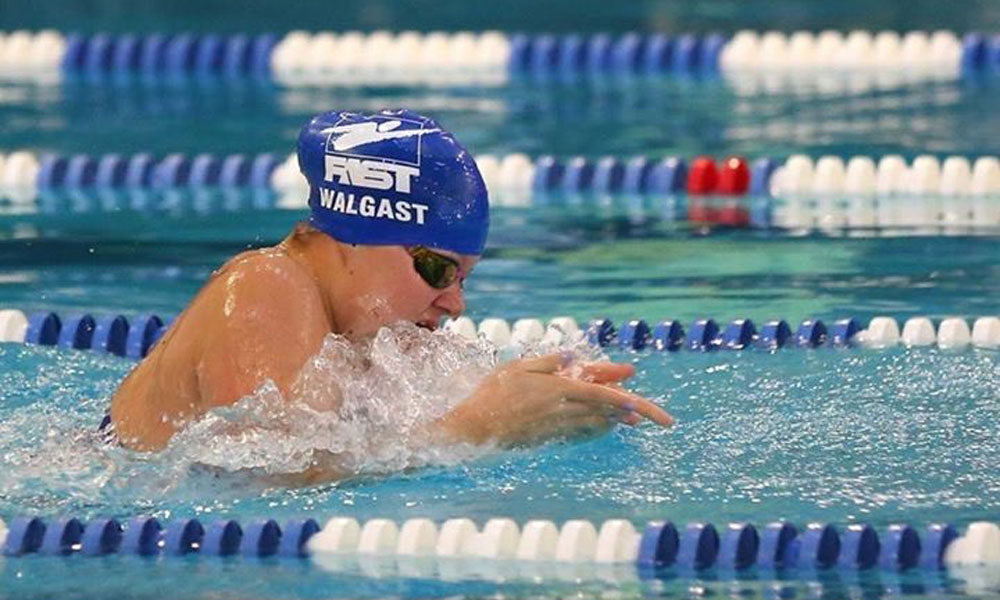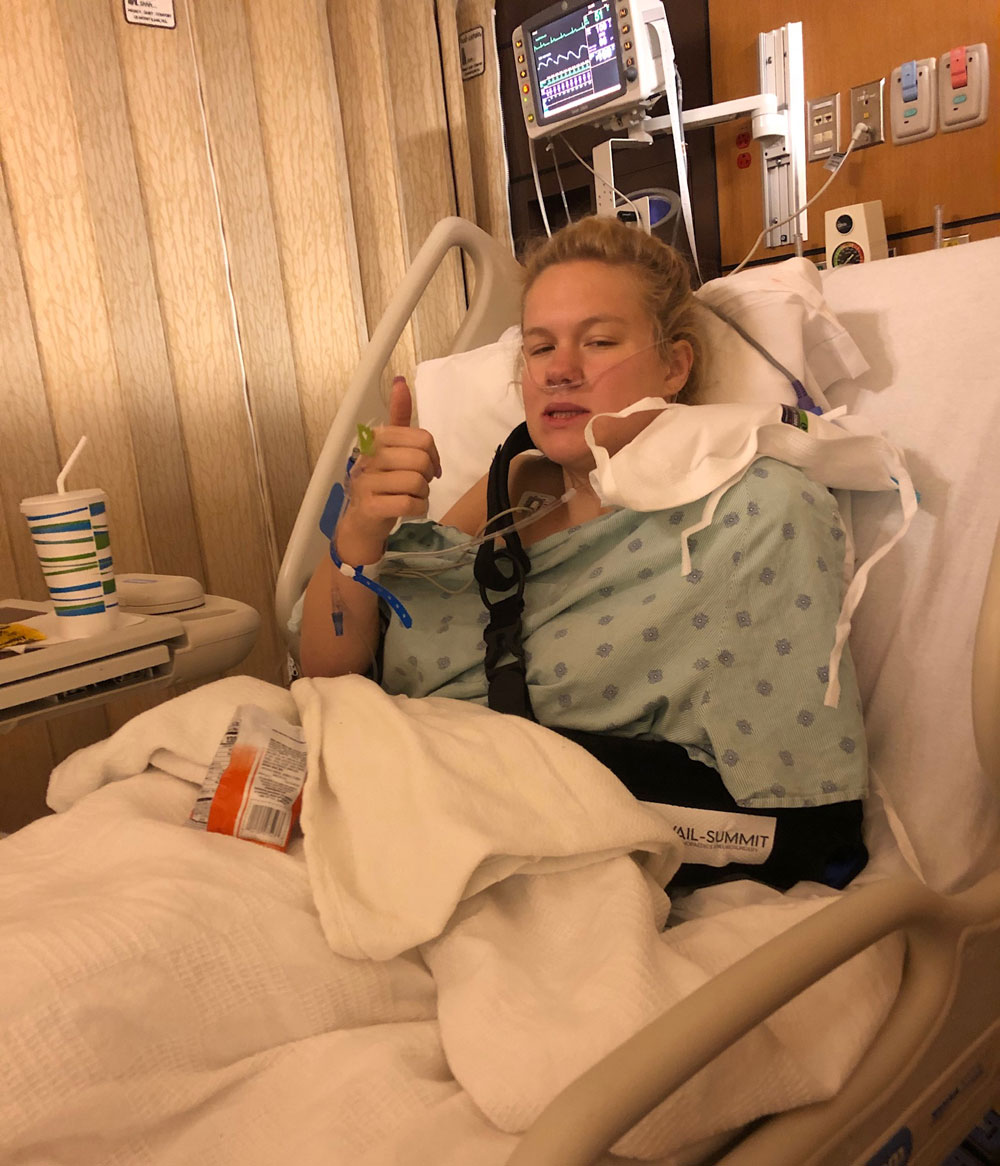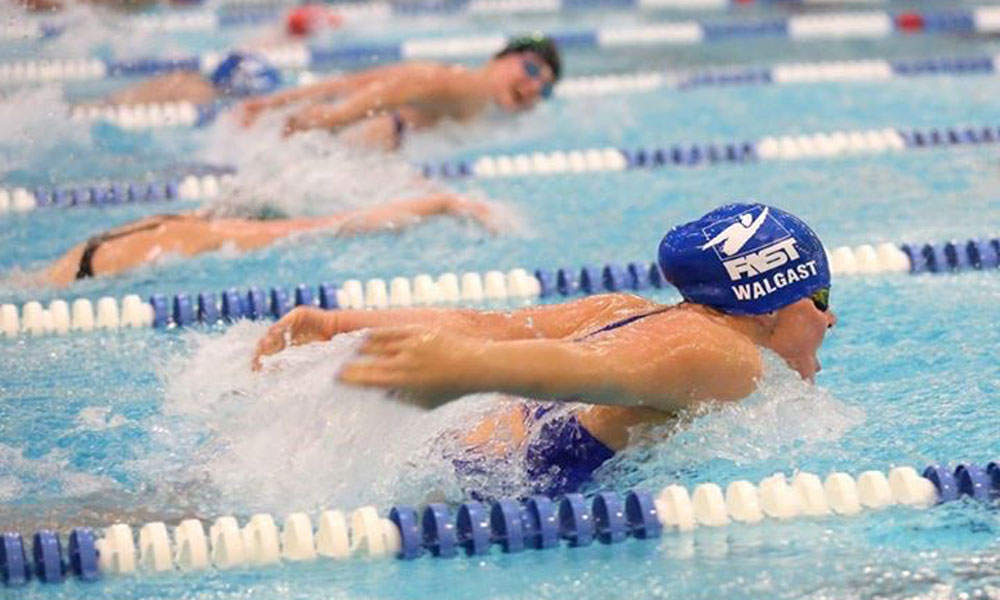
Emily Walgast started swimming competitively in 8th grade. Her stroke of choice was backstroke. She competed in the 100 and 200 yard backstroke throughout highschool and now swims in college at Adams State University. “I always had issues with both of my shoulders during my swimming career,” said Emily. “My symptoms started in high school, and progressed into college.”
During her freshman year of college, she was diagnosed with inflamed shoulder tendonitis in both shoulders. “When I got that diagnosis, my trainers in college suggested physical therapy, and I also began weightlifting. The combination of those two things started to help, and my symptoms began subsiding.” When the swim season came around however, Emily’s symptoms began to flare up again. “I was in a lot of pain. The pain was so severe that I could not sleep at night. I was in a lot of pain.”
In the summer of 2019, Emily stopped strength training. “I couldn’t handle the pain anymore.” Going into her 2019 – 2020 season, she decided to get a cortisone shot in both shoulders. “The cortisone shots worked for awhile, but the pain eventually came back.” Emily and her coaches decided to keep her out of the pool for 2.5 months to let her rest. “During that time, I rode the stationary bike daily, and continued physical therapy to strengthen my shoulders.”
Emily got approval to get back in the pool in November. “In my second to last meet, I had some of my top times, but I was still in so much pain. Everything I did hurt.” Emily decided to get an MRI to see what was really going on. “After the MRI, the physician I saw in Fort Collins told me that I did not need surgery, and to continue doing physical therapy. I was shocked. He essentially told me that I was going to have to live with this pain for the rest of my life.”
Not satisfied with that diagnosis, Emily decided to get a second opinion. “Everyone in my family has seen Dr. Cunningham, so I knew exactly who I was going to go see for a second opinion.” After reviewing Emily’s MRI, Dr. Cunningham told her that she was going to need surgery on both shoulders if she wished to continue swimming competitively.
“I was definitely in shock when he told me that. Dr. Cunningham was the first person to believe that I was really in a lot of pain. No doctor had really believed me up to that point. I felt like I could really trust Dr. Cunningham. Not only because he has worked on everyone in my family, but I know he also works on a lot of athletes. He knew that I wanted to get back to my sport, and the activities I love — not to mention just being able to sleep — and I knew he could get me back to those things. He really took the time to explain exactly what was going on, and what the recovery would look like. I had very clear expectations going into the whole process. I completely trusted Dr. Cunningham.”
After her diagnosis, Dr. Cunningham’s team told her that they had an unexpected opening for surgery the next day. “Wow! Not sure if I was totally ready to have surgery the next day, but I decided to move forward with it, because I was ultimately going to need surgery in both shoulders, and I knew it would be best not to delay.”

In January, 2020 Emily went in for surgery on her left shoulder. “I was nervous. This was my first major surgery. All of Dr. Cunningham’s team made me feel at ease, and I knew I was in good hands.” Dr. Cunningham performed a minimally invasive arthroscopic procedure in which he tightened all of the stretched out ligaments in Emily’s left shoulder.
“I didn’t begin physical therapy immediately after surgery, because my ligaments needed to heal and tighten,” said Emily. “I began physical therapy at school with the athletic trainers. Three months later, she was doing well on her left shoulder and wanted to move forward with surgery on her right shoulder. After this second surgery, Emily began the same physical therapy routine on her right shoulder.
“The physical therapy process was tough for me — not only physically, but mentally. Previously, I was the strongest member on the swim team, and after surgery I could barely lift anything. Usually I could do 160 pounds lat pull-downs, and I could barely pull down 10 pounds during the beginning of my physical therapy. It was upsetting at times, but I knew I needed to take it one day at a time.”
Emily is now 8 months post-operatively on her left shoulder, and 5 months post-operatively on her right. “I am doing so much better! I can sleep through the night without pain. I am still doing physical therapy two times a day, but I am going for hikes and stand-up paddle boarding.” Soon, she expects to be back in the pool swimming competitively.
“Advice I would give individuals who have gone through a similar injury as mine: it gets better! The pain will improve, and you will get through this process one day at a time.”
“I am so thankful to Dr. Cunningham and the whole Cunningham team for getting me back to the activities I love, and just getting my overall quality of life back. Living a pain free life is awesome! I am forever grateful!”

There are no guarantees of outcome. All surgeries involve the risk of major complications. Before you decide on surgery, discuss treatment options with your doctor. Understanding the risks of each treatment can help you make the best decision for your individual situation. Always ask your doctor about all treatment options, as well as their risks and benefits. Only your doctor can determine the appropriate treatment for your situation. The clinical information and opinions, including any inaccuracies expressed in this material by patients or doctor are not necessarily those of Richard Cunningham, MD and should not be considered as substitute for medical advice provided by your doctor.
